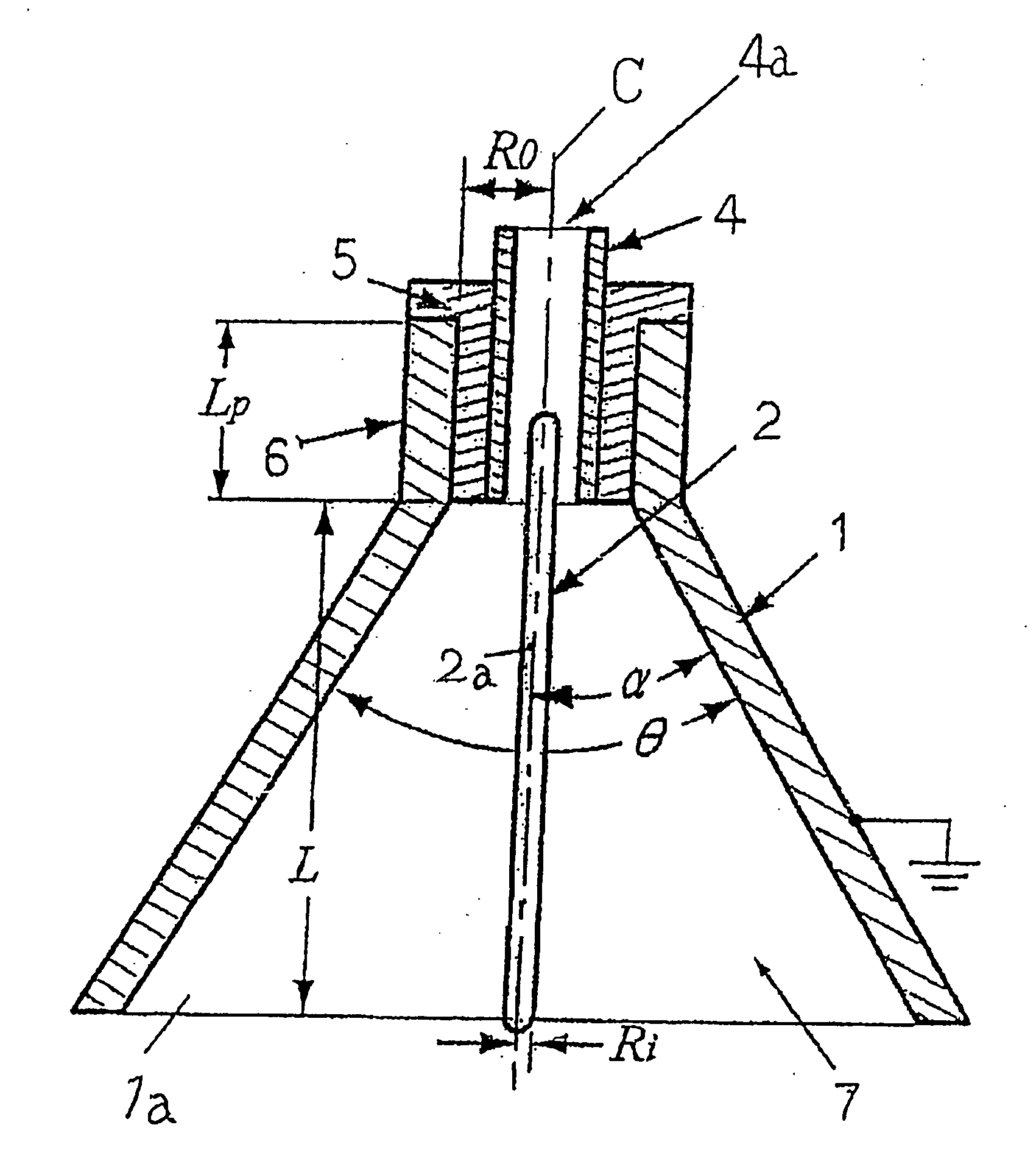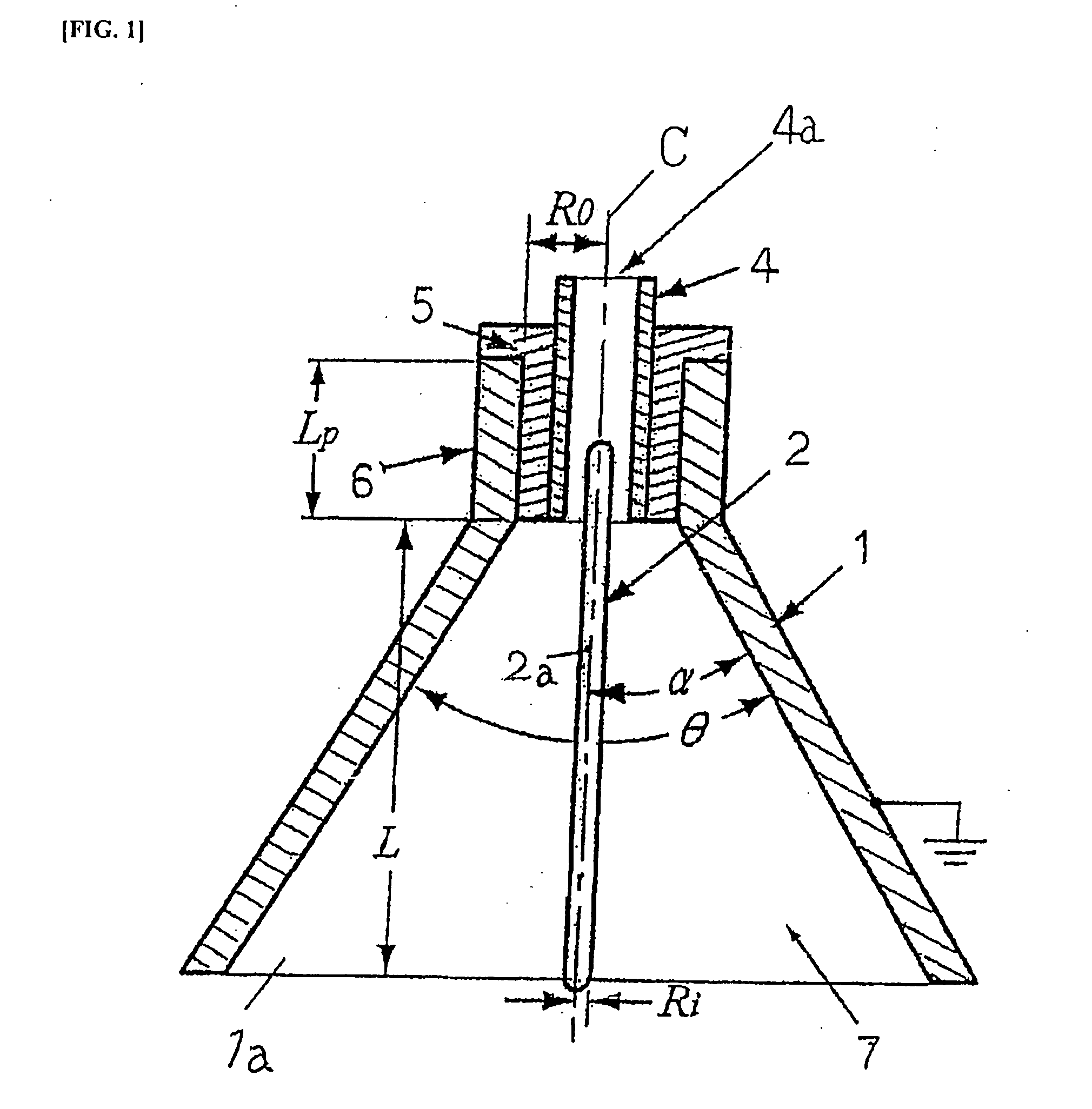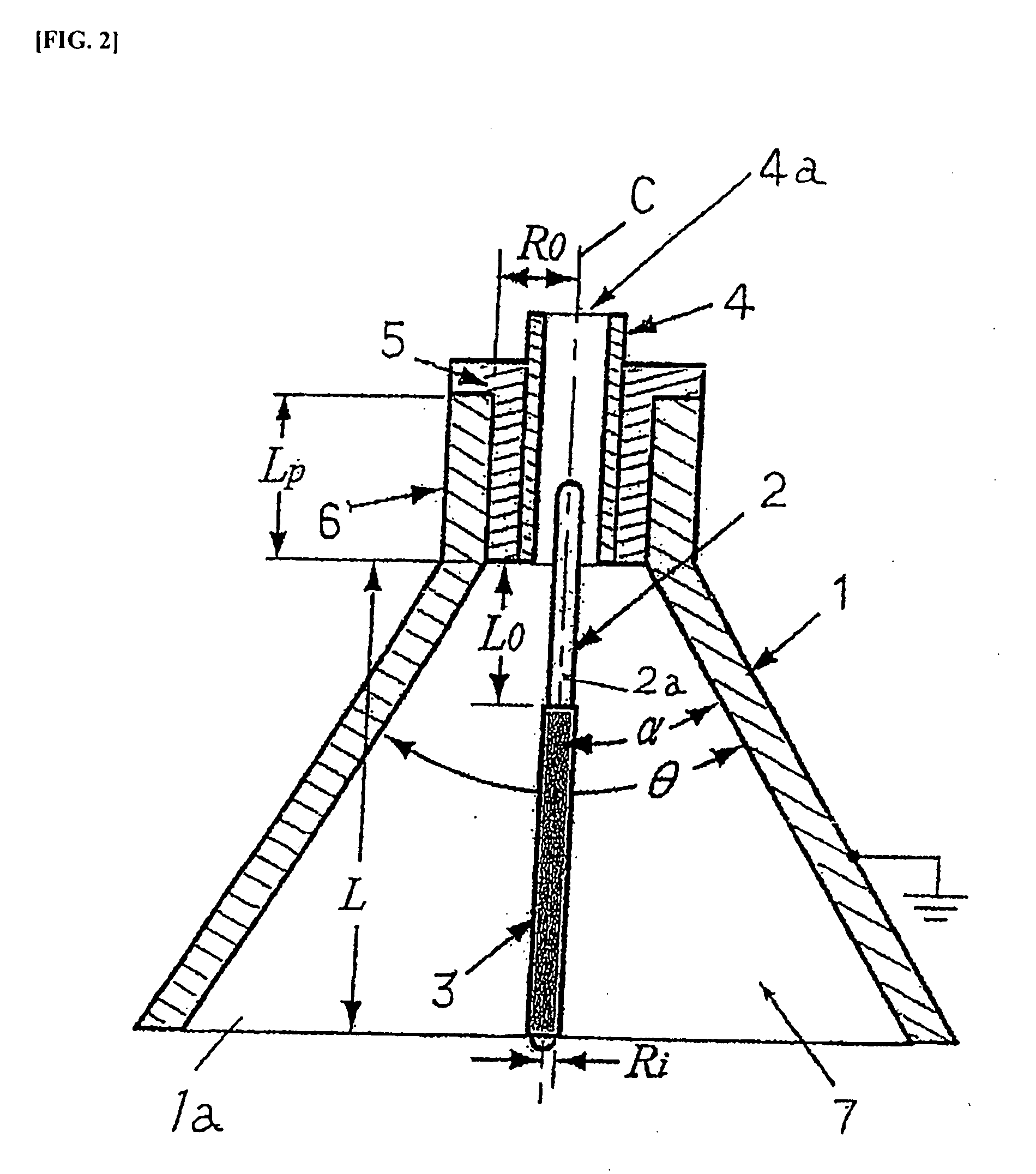Electro hydro dynamics pump (EHD pump)
- Summary
- Abstract
- Description
- Claims
- Application Information
AI Technical Summary
Benefits of technology
Problems solved by technology
Method used
Image
Examples
embodiment 1
Preferred Embodiment 1
[0031]FIG. 1 is a vertical sectional view of an EHD pump illustrating a basic working example of this invention. FIG. 1 shows a hollow conical metal electrode 1 formed from aluminum. At the top end of the hollow conical metal electrode 1 is formed a cylindrical neck 6, the top end part of which is open. Furthermore, the bottom end part 1a of the hollow conical metal electrode 1 is also open. Rod-shaped metal electrode 2 is stainless steel, the entire metal surface of which is exposed along the entire length thereof, forming an exposed metal part 2a. A fluid outflow duct 4 is installed in the neck 6 of the hollow conical metal electrode 1 through a plastic electrical insulation tube 5. In the preferred embodiment of FIG. 1, the fluid outflow duct 4 is formed from a glass tube with an outer diameter of 6 mm and an inner diameter of 4 mm, and forms a part of the fluid outflow channel, communicating with the inner part of the hollow conical metal electrode 1. Fluid...
embodiment 2
Preferred Embodiment 2
[0035]FIG. 2 illustrates another preferred embodiment of an EHD pump of this invention. In order to enhance pump characteristics, further improvements were made, using the EHD pump of FIG. 1 as a basis. The construction of the EHD pump of FIG. 2 is identical to that described in FIG. 1, except that the rod-shaped metal electrode 2 is removed. Also, the Reference Symbols (numerals and letters) given in FIG. 2 have the same meaning as in FIG. 1, except for the Reference Symbols “3” and “L0”.
[0036]That is to say, in the EHD pump shown in FIG. 2, a hollow conical metal electrode 1 open at the top end and at the bottom end 1a and a rod-shaped metal electrode are provided, and at the open top end of this hollow cylindrical metal electrode 1 is installed an electrically insulated fluid outflow duct 4 (fluid outflow channel) facing the hollow conical metal electrode 1, with the hollow conical metal electrode 1 and rod-shaped metal electrode 2 sharing a central axis C, ...
embodiment 3
Preferred Embodiment 3
[0040]In yet another preferred embodiment, FIG. 8 describes the results when two pump structures are concatenated, having the EHD pump structure as illustrated in FIGS. 1 and 2. The external dimensions per unit EHD pump structure were basically identical to those of preferred embodiment 1. However, as shown in FIG. 8, the length of the rod-shaped metal electrode 2′ was set at 75 mm, which is longer, and the rod-shaped metal electrode 2′ was disposed to hang across and pass through the two pump structures. Furthermore, the operating fluid was HFC 43-10 as above. When high voltage direct current of +16 kV was applied to the rod-shaped metal electrode 2′, and a fluid jet expelled from the first stage of the fluid outflow channel 4 was supplied to the second stage (upper part of the drawing) of the EHD pump structure, the pumping pressure PE in the second level fluid outflow channel 4 increases, and the maximum pumping pressure was about 5 kPa. However, the increas...
PUM
 Login to View More
Login to View More Abstract
Description
Claims
Application Information
 Login to View More
Login to View More - R&D
- Intellectual Property
- Life Sciences
- Materials
- Tech Scout
- Unparalleled Data Quality
- Higher Quality Content
- 60% Fewer Hallucinations
Browse by: Latest US Patents, China's latest patents, Technical Efficacy Thesaurus, Application Domain, Technology Topic, Popular Technical Reports.
© 2025 PatSnap. All rights reserved.Legal|Privacy policy|Modern Slavery Act Transparency Statement|Sitemap|About US| Contact US: help@patsnap.com



